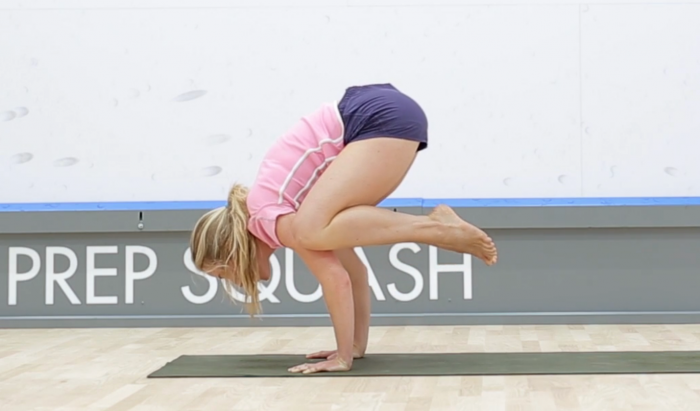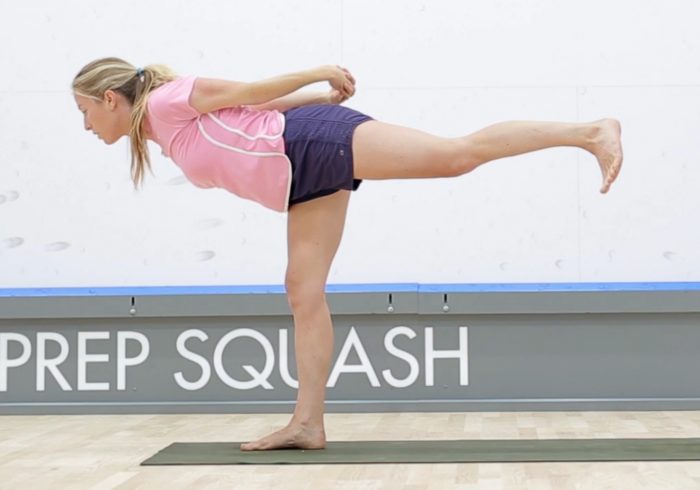I teach Yoga predominantly to amateur athletes and especially enjoy working with Squash players. The majority of my classes are filled with athletes across a broad range of sports, however, this was not always the case.
My persuasion skills were put to the test when trying to coax an athlete, especially men, into attending my Vinyasa Flow class, mainly by asking them to give it 4 weeks and see the results. Their misconception of a chilled out class that would not completely challenge their strength and make them sweat was quickly quelled. Their vast improvement in balance, flexibility, and non-dominant muscle strength after a period of practice was motivation enough to continue, however, the real excitement was derived from their increased sporting performance.
If you are reading this, you play Squash. If you haven’t yet tried Yoga or haven’t yet found the right class for you, I can confidently say that you are putting yourself at a disadvantage on-court. My reasons are as follows:
 Greater Strength and Stamina
Greater Strength and Stamina
Think about your large dominant muscles constantly used in squash – quads, hips/glutes, back, shoulder/arm. There are over 600 muscles in the body, and in order to increase your overall power and stamina, accessing and strengthening your non-dominant muscles can be invaluable. In addition, Squash is, of course, uses one side of the body which creates imbalances and can lead to long-term chronic injury. Yoga is a practice that not only raises your awareness of weaker areas but also improves their strength in a balanced manner. Lastly – yet another reason why this is important – improving your non-dominant strength helps to increase your on-court stamina. The more muscles you can rely on surrounding your dominant muscles, the longer you’ll outlast your opponent.
Increased Range of Motion and Flexibility
Flexibility & Squash? Sounds like oil & water to most players. The unfortunate truth is, as we age, even if you’re active, your body will stiffen and dehydrate – by adulthood your tissues have lost around 15% of their moisture content, leaving you more vulnerable to injury. Stretching slows this process by creating tissue lubricants and improves the body’s structure. Now think of this improvement translated on court: Your power improves from greater range of movement as you strike through the ball, your reach expands, your movement to recover quickens.
 Stability & Balance
Stability & Balance
Have you ever lost your balance slightly as you recover back to the T? Are you able to quickly change your movement direction? Most yoga poses challenge your stability, which in turn greatly improve your coordination and control over how your body moves. This applies to your swing as well – greater control in your swing while stabilizing the lower body results in the ability to place a perfect drop shot.
Mind and Breath Control
Have you ever felt ‘in the zone’, and perfectly executed a point, only to lose it in the next? All too common. Think about professional squash players. It is easy to say that the majority of at least the Top 50 Players in the World are near-perfect physical Squash specimens thanks to their training regimes. Sure, some are more naturally gifted than others, but what sets a long-standing no.1 player apart from the rest is mental focus. The ability to banish negativity and stay completely focused under extreme pressure takes a highly trained mind. This can be applied to any amateur athlete, and Yoga is the best way I can suggest to increase this mental focus and clarity. By controlling the breath during the entire practice and especially more challenging asanas (poses), we learn how to stay present, or ‘in the zone’. The mind can be trained just as much as our bodies.
Jess Winstanley
Not sure where to start?
Check out our library of yoga exercises you can incorporate into your training
Watch now